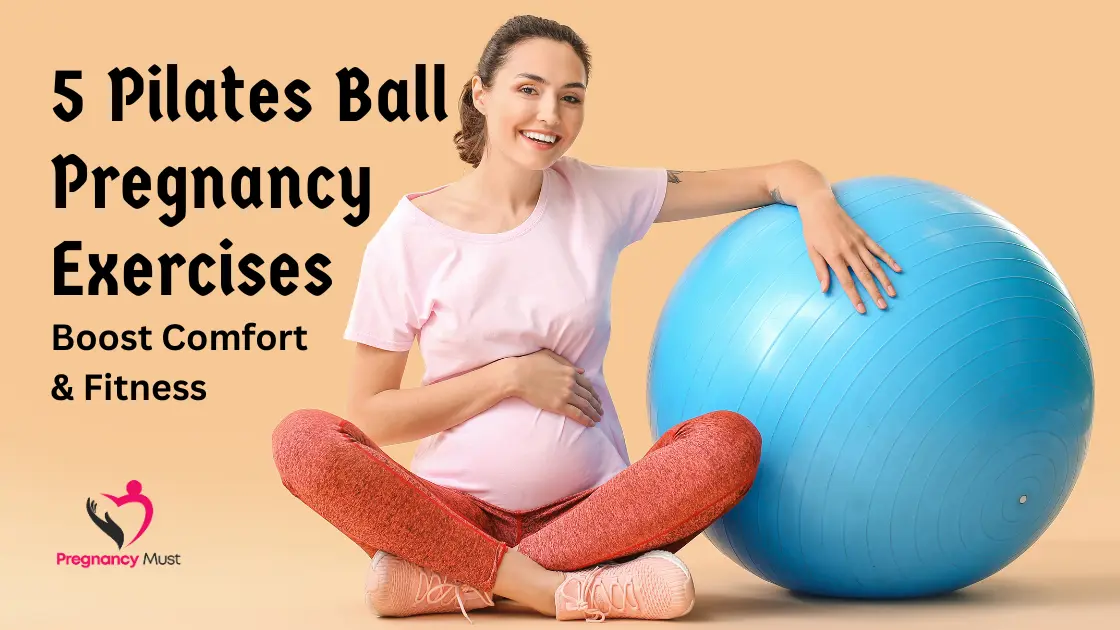Pilates ball pregnancy exercises can provide a safe, effective, and enjoyable way to stay active throughout your pregnancy. Not only do these exercises improve balance and flexibility, but they also prepare the body for labor and delivery.
In this guide, we will explore a variety of balance ball pregnancy exercises, their benefits, and how they can help you stay fit and comfortable during your pregnancy. We will also address frequently asked questions to ensure that you can approach these exercises with confidence.
Table of Contents
- Benefits of Pilates Ball Pregnancy Exercises
- Safe Pilates Ball Exercises for Pregnant Women
- Does Bouncing on a Ball Induce Labor?
- How Long to Bounce on Ball to Induce Labor?
- Tips for Safe Use of the Pilates Ball During Pregnancy
- The Role of Pilates Ball in Posture and Spine Health During Pregnancy
- Pelvic Floor Exercises: Preparing for Labor and Recovery
- Incorporating Pilates Ball into Your Daily Routine
- How Pilates Ball Pregnancy Exercises Help with Stress Relief
- How Pilates Ball Exercises Can Benefit Postpartum Recovery
- How to Choose the Right Pilates Ball for Pregnancy
- Conclusion: Embrace Pilates Ball Pregnancy Exercises for a Healthier Pregnancy
Benefits of Pilates Ball Pregnancy Exercises
Improve Balance and Coordination
As your body changes during pregnancy, your center of gravity shifts. This can lead to a lack of balance and coordination, making everyday activities more challenging. Pilates ball pregnancy exercises help strengthen core muscles and improve balance, making you feel more stable as you move.
Alleviate Pregnancy Discomforts
Pregnancy can come with aches and pains, particularly in the lower back and pelvis. Using a fitness ball for pregnancy can provide relief by gently stretching and strengthening the muscles, improving posture, and alleviating discomfort. The soft, supportive nature of the ball helps take pressure off sensitive areas.
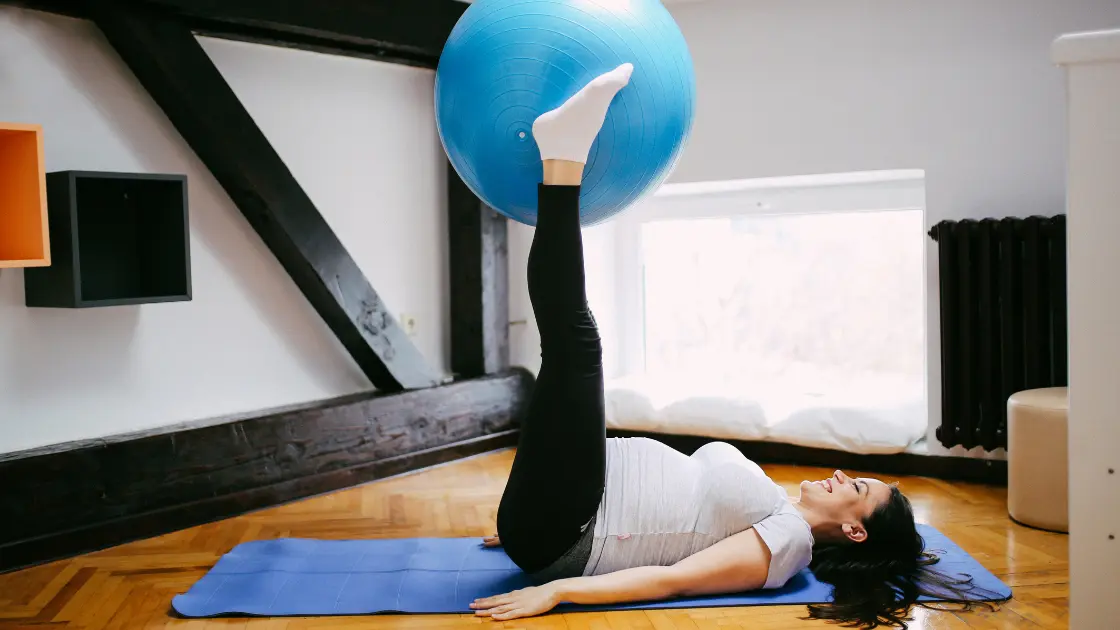
Enhance Flexibility and Mobility
Maintaining flexibility during pregnancy is crucial for preparing the body for labor. The pregnancy exercise ball workouts help stretch the hips, back, and legs, allowing for greater mobility. These exercises also promote circulation, which can reduce swelling and discomfort in the legs and feet.
Support Posture and Strengthen Core Muscles
As your belly grows, you may find it difficult to maintain proper posture. The maternity gym ball can help strengthen the muscles of the abdomen and back, improving posture and reducing strain on your spine.
Safe Pilates Ball Exercises for Pregnant Women
- Seated Bouncing for Core Strength
One of the simplest yet effective ball exercise for pregnant women is seated bouncing. This exercise helps engage the core muscles and improves balance. Sit on the ball with your feet flat on the floor, hip-width apart. Gently bounce up and down for 1-2 minutes, engaging your core muscles.
- Pelvic Tilts on the Ball
Pelvic tilts are excellent for relieving lower back pain and strengthening the pelvic floor muscles. Sit on the maternity gym ball, keeping your feet firmly planted on the floor. Tilt your pelvis forward, then back, gently moving your lower back in a rocking motion. This movement helps strengthen the muscles that support the lower back and pelvis.
- Hip Circles for Flexibility
Hip circles are a great way to increase flexibility in the hips and lower back. Sit on the ball with your feet flat on the floor. Slowly make circular motions with your hips, moving in both clockwise and counterclockwise directions. This exercise is excellent for loosening tight hips and improving circulation.
- Stretching and Relaxation on the Ball
Incorporating stretching exercises into your routine is essential for maintaining flexibility during pregnancy. Use the pregnancy exercise ball workouts to gently stretch your back, legs, and arms. For example, place your hands on the ball and slowly roll forward to stretch your back. Hold for 20-30 seconds, and then return to your starting position.
- Squats with the Ball
Squats are a fantastic way to strengthen your legs, glutes, and lower back. To make this exercise pregnancy-friendly, stand with your back against the fitness ball for pregnancy. Slowly squat down, keeping your knees behind your toes, and then rise back up. This exercise helps strengthen the lower body and prepares the muscles for labor.
Does Bouncing on a Ball Induce Labor?
A common question many expectant mothers have is whether bouncing on a ball can induce labor. While does bouncing on a ball induce labor is a topic of debate, there is no definitive answer. Some believe that gentle bouncing can help encourage the baby to move into the proper position for labor, while others suggest that it may help relax the pelvic muscles. However, it is important to note that there is no scientific evidence to suggest that bouncing on a ball will trigger labor on its own.
How Long to Bounce on Ball to Induce Labor?
If you are interested in using the ball to prepare for labor, it’s important to approach it gently. How long to bounce on ball to induce labor is an individual matter and will depend on your comfort level. It is generally recommended to begin with short, gentle sessions of 5-10 minutes. Over time, you can increase the duration as you feel comfortable, but always listen to your body and avoid overexertion.
Tips for Safe Use of the Pilates Ball During Pregnancy
- Consult Your Doctor: Before beginning any new exercise routine, it’s important to consult with your healthcare provider to ensure it’s safe for your individual situation.
- Choose the Right Size Ball: Ensure that you use a maternity gym ball that is the correct size for your height. When sitting on the ball, your knees should be at a 90-degree angle, with your feet flat on the ground.
- Avoid Overexertion: Pregnancy is a time to focus on gentle movements rather than intense workouts. Always listen to your body and stop if you feel any discomfort or pain.
- Use a Stable Surface: When performing pilates ball pregnancy exercises, ensure that you are on a stable, non-slippery surface to prevent accidents.
The Role of Pilates Ball in Posture and Spine Health During Pregnancy
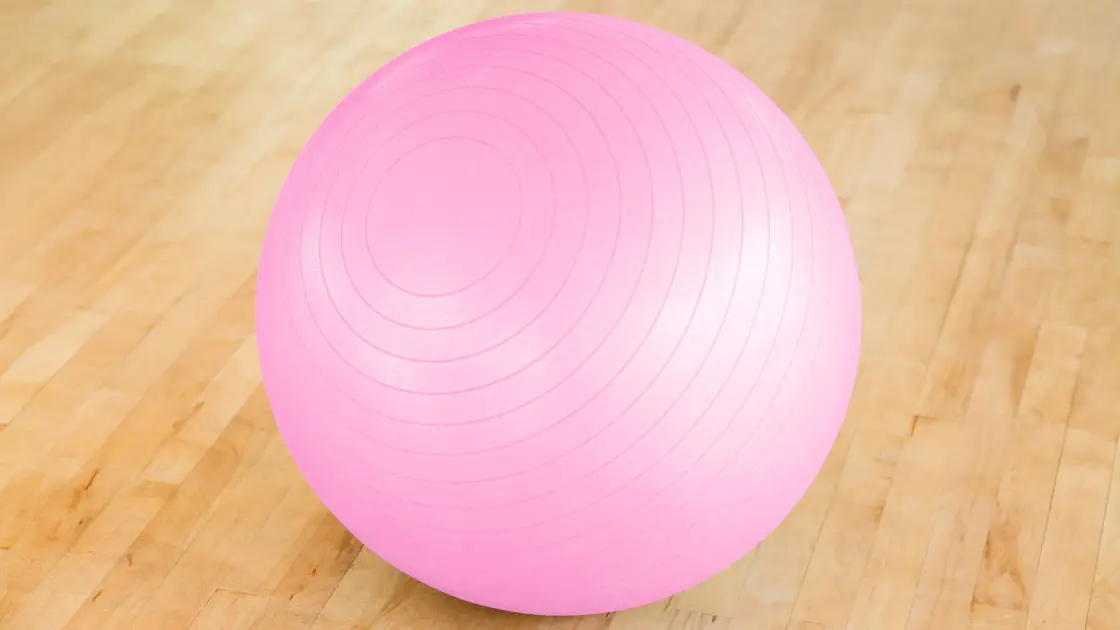
Correcting Posture with Pilates Ball
As your pregnancy progresses, your body undergoes significant changes that can impact your posture. Your growing belly shifts your center of gravity, which can lead to slouching or uneven weight distribution. The pilates ball pregnancy exercises can be instrumental in improving your posture by strengthening the muscles responsible for maintaining alignment.
The stability ball allows you to practice pregnancy exercise ball workouts that help engage the core, back, and pelvic muscles. Exercises like seated pelvic tilts and spine stretches can correct poor posture, preventing back pain and reducing the risk of injury as your body changes.
Strengthening the Spine with Gentle Movements
The maternity gym ball is also great for gently mobilizing the spine. Many women experience back pain and discomfort due to the weight of the baby and the increased pressure on the spine. Using the ball for exercises like gentle spine twists or seated bounces can help decompress the spine, promote flexibility, and alleviate tension. Regular use of the ball can lead to improved spinal health, making you feel more comfortable throughout your pregnancy.
Pelvic Floor Exercises: Preparing for Labor and Recovery
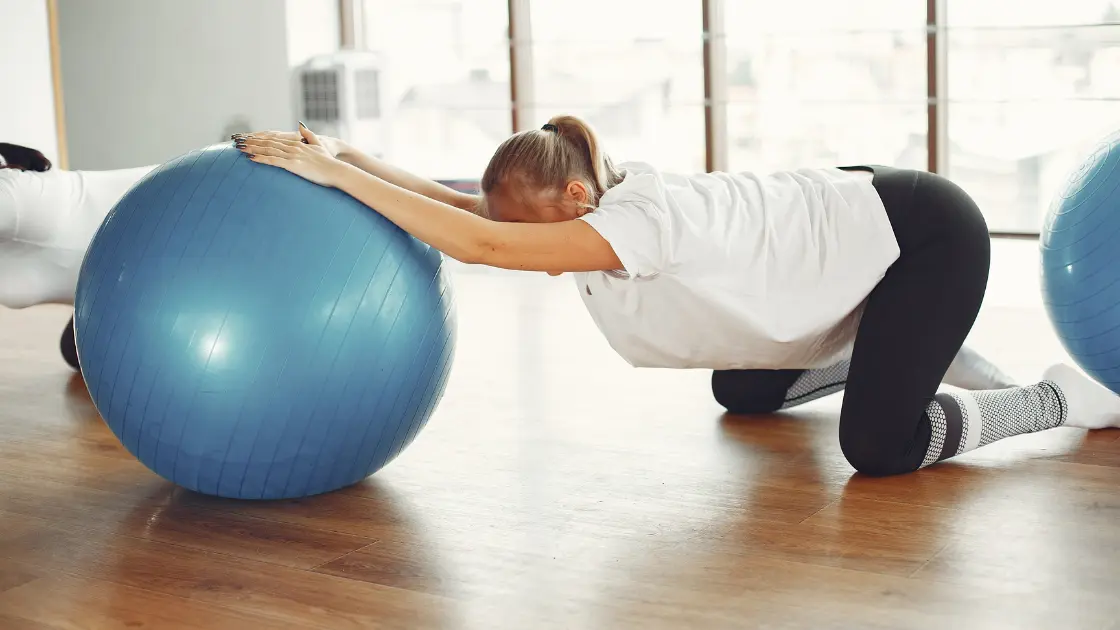
Why Pelvic Floor Strength Matters
The pelvic floor muscles support vital organs such as the bladder, uterus, and intestines. These muscles undergo considerable strain during pregnancy and childbirth. Pilates ball pregnancy exercises can target these muscles, strengthening them to prepare for labor and support postpartum recovery.
Strong pelvic floor muscles can reduce the risk of complications during labor, help control urinary incontinence post-birth, and promote faster recovery. Incorporating pelvic floor exercises using the fitness ball for pregnancy into your routine can be a valuable tool in maintaining pelvic health.
Effective Pelvic Floor Exercises Using the Ball
- Kegel Exercises on the Ball: Sit on the ball with your feet flat on the ground. Squeeze and lift your pelvic muscles as if stopping the flow of urine, holding for a few seconds before releasing. Repeat this for several rounds.
- Pelvic Lifts: While sitting on the ball, contract your pelvic muscles and gently raise your hips off the ball. Hold for a few seconds before lowering. This exercise strengthens the pelvic floor and enhances blood flow to the pelvic area, preparing it for childbirth.
Incorporating Pilates Ball into Your Daily Routine
Simple Daily Routines with Pilates Ball
You don’t have to dedicate hours to pilates ball pregnancy exercises to enjoy their benefits. In fact, incorporating short 10-15 minute sessions into your daily routine can be incredibly effective. Here’s how:
- Morning Stretch: Begin your day with a gentle stretch on the ball. Sit with your feet flat on the floor, and slowly roll forward to stretch your back and shoulders. This simple movement can help you feel more relaxed and energized.
- Midday Relief: If you experience back or pelvic discomfort during the day, take a few minutes to sit on the ball and perform a few gentle bounces or pelvic tilts. This will help alleviate tension and keep you comfortable.
- Evening Wind Down: In the evening, use the ball for a few relaxing stretches. This will help release any tension accumulated during the day, promoting better sleep and overall well-being.
How Pilates Ball Pregnancy Exercises Help with Stress Relief
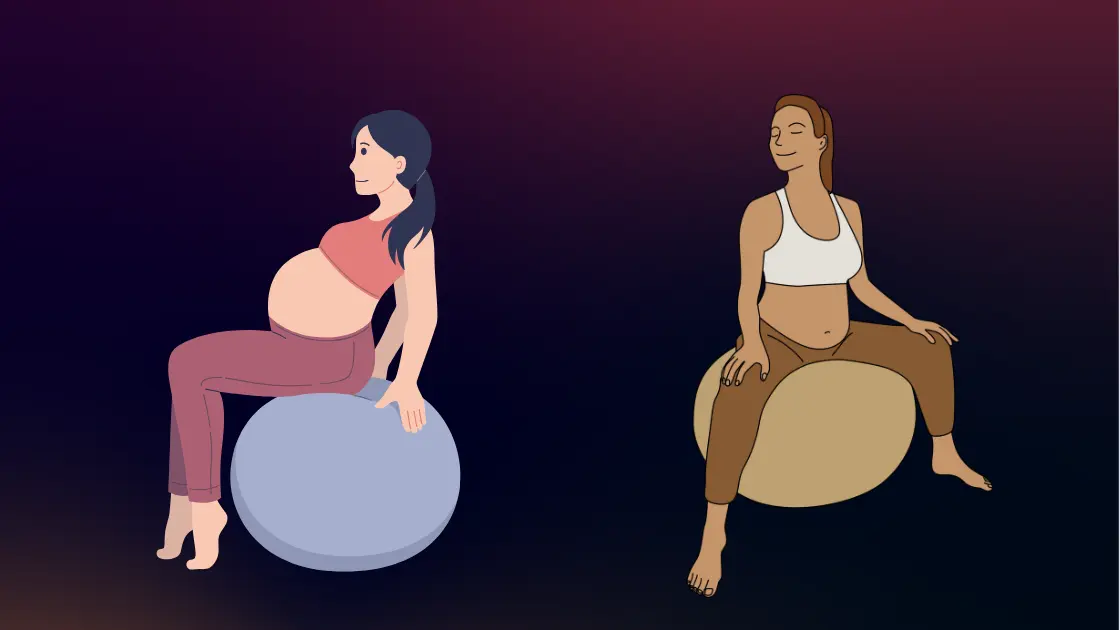
Reducing Pregnancy Anxiety and Stress
Pregnancy can bring a lot of physical and emotional changes, and it’s common for expecting mothers to experience stress or anxiety. Pilates ball pregnancy exercises can be a great way to reduce stress levels and promote relaxation. The gentle, rhythmic movements of the ball help activate the parasympathetic nervous system, which is responsible for promoting calm and reducing stress.
Furthermore, the deep breathing associated with these exercises helps activate the body’s relaxation response. When you incorporate these movements into your routine, you can experience improved mental clarity, reduced anxiety, and a greater sense of well-being.
Breathing Exercises with the Pilates Ball
Breathing exercises performed on the maternity gym ball can help reduce stress levels and prepare you for labor. Here’s an effective technique:
- Sit on the ball with your feet firmly on the ground and your back straight.
- Take a deep breath in, expanding your lungs and belly as much as possible.
- Slowly exhale, letting go of tension in your body.
- Repeat this breathing pattern for a few minutes, allowing your mind and body to relax.
How Pilates Ball Exercises Can Benefit Postpartum Recovery
Supporting Postpartum Fitness
After childbirth, many women are eager to regain their strength and restore their fitness. Pilates ball pregnancy exercises can play a vital role in postpartum recovery. These exercises can be used to gently ease back into fitness after birth, supporting your body in regaining strength and flexibility.
You can begin with gentle stretches and progressively incorporate more challenging ball exercises for pregnant women as your body heals. The stability and cushioning provided by the ball reduce the strain on your joints, allowing you to work out safely during postpartum recovery.
Pelvic Floor Rehabilitation Postpartum
One of the most important areas to focus on after childbirth is the pelvic floor. After delivery, it’s common for women to experience weakness or stretching of the pelvic muscles. Using the fitness ball for pregnancy can help you perform pelvic floor exercises safely and effectively during postpartum recovery, promoting faster healing and improving bladder control.
How to Choose the Right Pilates Ball for Pregnancy
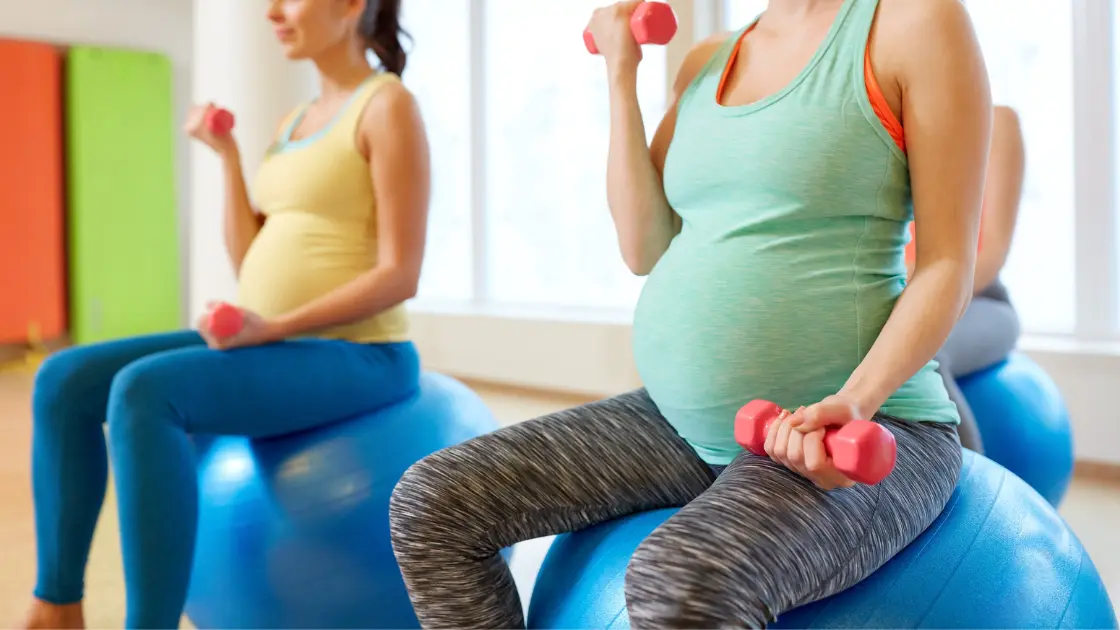
Selecting the Best Ball Size
Choosing the right maternity gym ball is essential for ensuring comfort and effectiveness during your workouts. The size of the ball should be based on your height to ensure that when sitting on it, your knees are at a 90-degree angle, and your feet are flat on the floor.
- Under 5’4″: Choose a 55 cm ball.
- 5’4″ to 5’8″: Choose a 65 cm ball.
- Over 5’8″: Choose a 75 cm ball.
Safety Features to Look For
Ensure that the ball you choose has anti-burst technology, which prevents the ball from popping suddenly if punctured. Look for a ball with a non-slip surface for stability and comfort during exercises. You can also purchase an inflatable pump to keep the ball at the proper air pressure for your height and comfort.
Conclusion: Embrace Pilates Ball Pregnancy Exercises for a Healthier Pregnancy
Pilates ball pregnancy exercises improve posture, flexibility, and comfort while preparing for labor. Adding balance ball pregnancy exercises to your routine promotes a positive pregnancy and smooth transition to motherhood.
Always consult your doctor before starting any exercise and listen to your body.
Explore more on Pregnancy Must –
